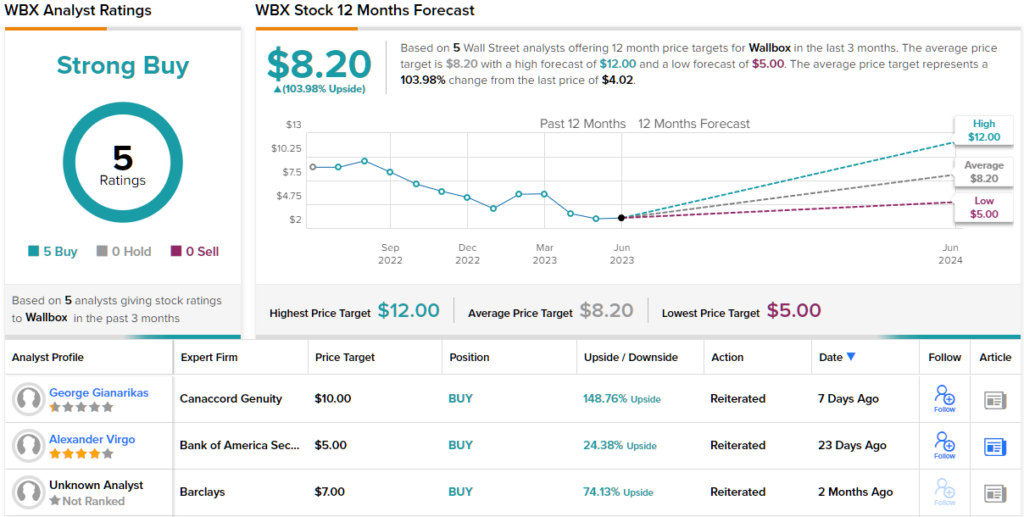Bring up electric vehicles, or EVs, and you’re sure to hear a wide range of opinions. One thing is clear: the market for EVs is rapidly expanding. The tailwinds include both political and social pressures, but the industry itself is also driving the expansion. New models are coming out, battery technology – and vehicle range – are improving, and charging networks are expanding and growing more efficient.
Elevate Your Investing Strategy:
- Take advantage of TipRanks Premium at 50% off! Unlock powerful investing tools, advanced data, and expert analyst insights to help you invest with confidence.
Every major economic and technological evolution opens up investment opportunities, and EV stocks are no exception. With the EV market expected to hit more than 17 million unit sales annually by 2028, this is a wide-open field for risk-friendly investors. The choices are not limited to stocks in vehicle makers; investors can also buy into charging network providers, battery makers, and tech firms. They all have their hands in the EV pot.
One analyst, George Gianarikas from Canaccord Genuity, is particularly impressed by the potential inherent in the EV industry, and his recent picks include two EV-related stocks that he sees gaining 60% or better in the coming months. Do other analysts agree with Gianarikas? We’ve used the TipRanks database to find out. Let’s take a closer look.
Rivian Automotive (RIVN)
We’ll start with Rivian Automotive, an electric car manufacturer that has taken an innovative approach to vehicle design. Rivian has developed a ‘skateboard’ platform, a wheeled chassis powered by four electric motors – one at each wheel. This versatile chassis incorporates pre-installed fittings for various battery systems and can accommodate different body styles and functions. As a result, it’s a modular EV that offers maximum flexibility and can easily adapt to a range of vehicle types. Rivian’s platform is designed from the ground up to provide maximum flexibility.
We should note several issues that have had investors worried about Rivian’s performance as an automaker. The company has yet to turn a profit, and has a reputation for burning cash. However, there are indications that this may soon turn around. In Q4 of last year, the company reported record-level production and delivery numbers – 10,020 battery EVs coming off the production line, and more than 8,000 delivered to customers. These numbers mark a significant increase from the 1,003 produced and 909 delivered in the fourth quarter of the previous year. While the production and delivery figures for the first quarter of this year were slightly lower, with 9,395 vehicles built and 7,946 delivered, they still demonstrate a strong performance.
The y/y increase in production reflects the ramp-up of operations at the company’s Normal, Illinois factory. That ramp-up has led to a surge in output for 2Q23, with Rivian reporting 13,992 vehicles produced in Q2, and 12,640 delivered. In its production update, Rivian reiterated its goal of reaching an annual production of 50,000 vehicles.
The company will release its 2Q23 financial results on August 8, but we can look back at Q1 to see where Rivian stands now. The company reported $661 million in sales revenue, missing expectations by $9.2 million. On a positive note, the company’s net loss, a non-GAAP EPS of $1.25, was 34 cents better than the forecast, and showed an improvement of 12.5% year-over-year.
In Gianarikas’ view, the increased production numbers bode well for Rivian, showing that the company is maturing. The analyst lays out opinion clearly, explaining why he believes Rivian will continue to outperform expectations: “The road to recovery continues. 2Q23 production/deliveries surprised to the upside. Rivian’s team has turned a corner operationally as the company escapes its post-IPO operational quagmire. We expect a continued message of stabilization and optimism when Rivian reports its full earnings – as supply chain and operational bottlenecks ease and the R2 readies for its unveiling early next year.
“We continue to believe Rivian is on its way to capturing its fair share of the EV market over time through a sound, thorough vertically integrated strategy that should lead to a desirable customer experience and strong profitability over time,” Gianarikas added.
Gianarikas goes on to rate RIVN shares a Buy, and his $40 price target implies the stock will gain ~63% over the next 12 months. (To watch Gianarikas’ track record, click here)
Overall, Rivian holds a Moderate Buy rating from the analyst consensus, based on 16 analyst reviews that include 10 Buys, 5 Holds, and 1 Sell. However, the stock’s $24.73 selling price and $23.50 average price target combine to suggest a modest one-year downside of ~5%. It will be interesting to see whether the analysts update their models or change their RIVN ratings shortly. (See RIVN stock forecast)
Wallbox N.V. (WBX)
Next up is Wallbox, the Spanish-based firm that is building up a strong presence in the EV charging niche. This is a niche with high growth potential, as the rapid expansion of EV adoption being promoted – and sometimes mandated – by governments at national and local levels cannot be accomplished without simultaneously building out the charging network. Wallbox, which has developed lines of charging ports and stations for both commercial and residential use, is compatible with most EV brands, including industry leaders like Tesla and BYD.
In addition to charging your EV, Wallbox has built value-added capabilities into the product lines. The company offers chargers that can fit both Type 1 and Type 2 vehicles charging ports, and have bi-directional operability, allowing users to discharge a fully powered EV back into the home, for immediate power use, or even onto the local electric grid.
All of this has given Wallbox a degree of cachet in the industry, and has led to increases in the company’s revenues. Wallbox reported a top line of €35.1 million in 1Q23, up 24% year-over-year. In dollar terms, the revenue converted to US$38.6 million; this figure missed the forecast by US$2.8 million. The company’s gross margins came to 36.8%, up 90 basis points, or 0.9%, from the previous quarter, and successful cost reduction measures allowed Wallbox to save more than €10 million when compared to 4Q22 expenditures. Also during the first quarter, Wallbox entered the Japanese EV charging market, opening up an important avenue to expand its business.
Since reporting the Q1 results, Wallbox has made two major announcements of particular interest to investors. First is the June publication of an agreement with the big-box warehouse retail chain Costco. The agreement makes Wallbox’s best selling EV charger, the Pulsar Plus, available at Costco stores across the US, starting this month.
Second was the July 6 announcement that the company reached a milestone in sales of its Supernova DC fast chargers. Wallbox has made 1,000 sales of the product, an industry leader in quality, to more than 80 customers in 30 countries. The Supernova DC fast charger was introduced last year.
All of this, but especially the company’s rapidly growing network of partnerships, caught the attention of analyst George Gianarikas, who sees Wallbox in a position to continue its expansion. He writes of Wallbox’s prospects: “Enabled by its merchant status and technology focus, Wallbox has, to date, built a strong ecosystem in the US — with companies including Uber, Lyft, Fisker, Nissan, and now Costco. We expect this trend to continue. Long-term Wallbox shareholders should be rewarded. Yes, current data points around overall EV sales (ex-Tesla) remain tepid and National Electric Vehicle Infrastructure Program (NEVI) has been slow to roll. However, 2024 could present an inflection in demand, particularly in commercial/DC charging.”
“The company’s vertically integrated strategy should continue to produce a technically superior and higher-quality product portfolio. This focus on quality should also result in greater-than-market growth rates for Wallbox — as the reliability demands of both the home and public marketplace impact its rivals’ ability to compete,” the analyst added.
In-line with this stance, Gianarikas gives WBX a Buy rating, and his $10 price target implies a potential gain of ~149% on the one-year horizon.
Wallbox has attracted the bulls, as the unanimous Strong Buy consensus rating, based on 5 recent positive share reviews, shows. The stock is trading for $4 per share, and its average price target of 8.20 indicates room for ~104% growth in the year ahead. (See WBX stock forecast)
To find good ideas for stocks trading at attractive valuations, visit TipRanks’ Best Stocks to Buy, a tool that unites all of TipRanks’ equity insights.
Disclaimer: The opinions expressed in this article are solely those of the featured analysts. The content is intended to be used for informational purposes only. It is very important to do your own analysis before making any investment.



















